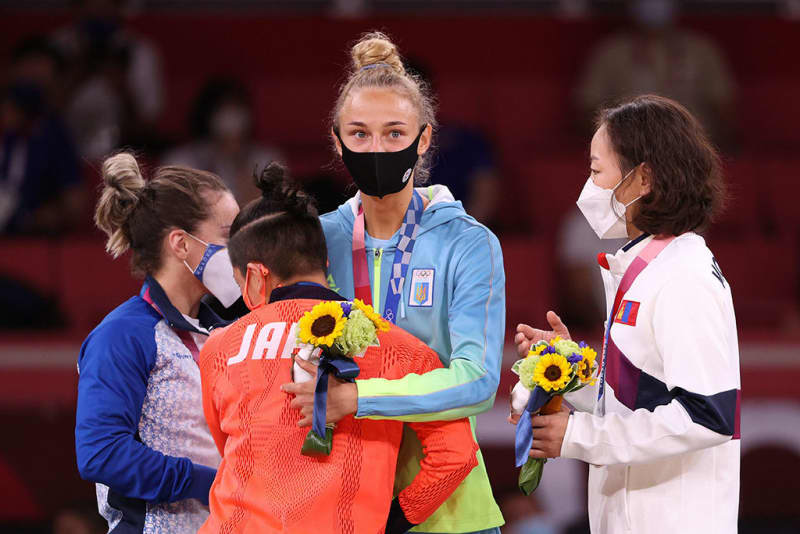Government involvement in sport is fraught with issues

People will soon be tuning into the 2022 Beijing Winter Olympics — the second Olympics hosted during the pandemic and one that has come under much criticism.
It was recently announced that tickets won’t be sold to the public. Scholars and activists have continuously called for a boycott of the Games on the grounds of humans rights abuses. And many people are left wondering why the event would even be hosted given the ongoing global health crisis.
These developments have drawn much attention to the politics and political structures underlying the Olympic Games and sport more broadly.
While it is often suggested that we should keep the politics out of sport, the public is generally coming to accept how sport is inherently political.
In Canada, we have a national sport policy, and the “encouragement, development, and promotion of sport” is identified as the responsibility of the government through the Department of Canadian Heritage Act.
My research program currently focuses on understanding sport participation in diverse community contexts. This involves mapping the surprisingly complex system of structures that support sport participation and the ways that they vary across provinces and regions.
Multi-level governance and Canadian sport
We often think of sports at the elite level (like professional or Olympic athletes). A second thought might be grassroots or community sport (like a local soccer club or little league). These are both important parts of the sport system and are reflected in political structures.
But the network of organizations that support sport participation in different ways is complex. Scholars who study these structures call it multi-level governance.
At the top of the sport system in Canada, we have Sport Canada. As a government body, Sport Canada oversees a variety of programs. These programs include the Athlete Assistance Program, the Hosting Program and the Sport Support Program.
Next, there is a range of national, provincial and multi-sport service organizations — these organizations are generally non-profits. They work together to support the development and delivery of sport participation across the country.
For example, Basketball PEI supports clubs and competitions at the provincial level, while Wheelchair Rugby Canada oversees international competitions and the national team.
And at the local level, there are many organizations who support sport participation. These organizations are in the private, non-profit and public sector. For example, private gyms host squash leagues, volleyball clubs offer youth development programs, and schools have competitive swim programs.
Municipalities also support formal and informal sport participation through recreation programming as well as maintaining facilities like tennis and basketball courts that people can book or drop in and use at their leisure.
The diversity of organizations working in the sport system allows for varied landscapes of sport participation opportunities to develop in different regions. My team’s research found that the average age of rowers varied by up to 15 years across different parts of Ontario. These trends are related to demographics, local culture, as well as how people access participation opportunities.
Significant investments and political will can improve access to sport. Despite this, data shows sport participation declines with age and is impacted greatly by factors such as gender and social class.
Despite the professionalization of the sport system, researchers have critiqued the “one-size fits all” approaches to sport development. They suggest place or context-based strategies might be more effective at increasing sport participation.
Complex policy issues
Increasing sport participation is generally accepted as a desirable policy goal. However, the process of achieving it is complex.
Sport policy is complicated by the tensions that emerge around supporting both elite athletes as well as sport participation in general. When push comes to shove, there isn’t always enough budget or political will to build both high performance sport centres and a variety of community based introduction to sport programs. Innovative approaches in some countries are also challenging us to think differently about how we structure our sport systems.
Sport events like the Olympics complicate these problems further. They introduce disruptions to the system and redirect attention and resources. In the lead up to the 2010 Winter Olympics in Vancouver, Own the Podium was developed for the purpose of achieving high performance goals (like gold medals).
Multi-level governance creates a host of problems when it comes to evaluation because sport participation is supported at the local, regional and federal level and each of these jurisdictions have their own priorities, metrics and reporting structures.
Making matters worse, informal sport participation (like pick-up games or “beer” leagues) are not easily tracked or recorded within the sport system and therefore not often considered in evaluation efforts.
Despite the ongoing modernization of the sport system, government involvement in sport is fraught with issues. These issues can be described as “wicked problems” because they are difficult to define, underpinned by competing ideas and potential solutions often create future problems.
The ‘trickle-down’ effect?
The COVID-19 pandemic has challenged us to think differently about sport. We’ve had a chance to re-evaluate where, how and when participation is important.
The upcoming Olympic Games offer another chance to reflect on these issues. The idea that major events lead to increased sport participation (often called the demonstration or “trickle-down” effect) is hotly disputed. But organizations who have the capacity and resources to leverage events and elite athlete performances may use them to achieve participation related goals.
The key to improving sport participation likely does not lie exclusively in discrete things like policy itself, or whether or not an event takes place. Rather, sport participation is supported by a strong system of connected stakeholders working towards common goals.
A strong system allows for coordinated policy implementation, evaluation and ultimately outcomes related to health, citizenship and community development that are accessible and realized for all Canadians.
This article was originally posted on Government involvement in sport is fraught with issues



